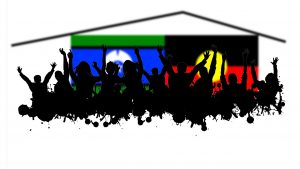New indicators to be rolled out by the Guardian’s Office in the last quarter of 2016 will strengthen and sharpen the focus on Aboriginal[1] culture and community connection in its monitoring of residential care.
 In her report last week The Life They Deserve, Commissioner Margaret Nyland recognised the over-representation of Aboriginal young people in the child protection system and the significance of maintaining community and culture for them.
In her report last week The Life They Deserve, Commissioner Margaret Nyland recognised the over-representation of Aboriginal young people in the child protection system and the significance of maintaining community and culture for them.
Aboriginal children flourish best when they can safely enjoy their land, language, community and culture…
… some Aboriginal children need to reside with non-Aboriginal carers. Supporting the cultural needs of these children is not tokenistic, but profoundly important…
There is a need to re-focus cultural support in Families SA (…) to ensure that all practitioners have access to advice and support in specific cases, as well as more strategic guidance and training. [2]
The new indicators have been in development since 2015 when a consultation with young people and the Murraylands community and a review of the literature made clear the importance of maintaining cultural connections in the development of a healthy identity in young Aboriginal people in care.
Senior Policy Officer Alan Fairley said, ‘The indicators align with the Standards of Alternative Care in South Australia which emphasise the right of Aboriginal children in care to know about their cultural identity and their community and to live in a place where people understand and respect their culture.
‘The new Indicators will help us decide whether the care arrangement:
- makes the child or young person central by helping them understand their current situation and how they can contribute to decision making
- promotes contact with appropriate people and activities
- uses appropriate service methodologies and tools
- enables the effective involvement of a range of carers and other service providers, and
- has a culturally supportive physical and social environment.
‘And most of all, Advocates will be listening and talking with young people and reporting on how they see their cultural connection being supported.’
For further information about the development of the new Culture and Community Indicators, contact Alan Fairley, GCYP Senior Policy Officer, at alan.fairley@gcyp.sa.gov.au
We love to hear and publish your comments. Please use the reply space below.
[1] We will use the term Aboriginal to include people of Torres Strait Islander descent in this article.
[2] From Chapter 16 of the Child Protection Systems Royal Commission, The life they deserve: Child Protection Systems Royal Commission Report, Volume 1: Summary and Report (Government of South Australia, 2016) available at https://www.agd.sa.gov.au/child-protection-systems-royal-commission
This item was also published in the August 2016 Guardian’s Newsletter.
We’d love to receive your comments – please use the reply space below.
One Response
I have worked as an Aboriginal Family Practitioner with in the Child protection area for a number of years, we know and understand each Aboriginal child needs to engage and have a strong understanding and connection with their culture, the barriers I’ve crossed with our young people are a lot of our families have lost their sense of identity and don’t know where their connections are, as a AFP I understand the importance for researching to find these connections, the problem is this is so time consuming.
To receive a back ground of their stories could mean I would have to communicate with various departments and other organisations within Australia, the young people don’t fit the criteria of Linkup because they haven’t been stolen and they aren’t over 18, the families have very little background of history and to receive information sometimes could mean gaining information from a birth or death certificate, and this is another extension of working hours outside of the case management.
We all know that this is a vital ingredient to our wellbeing to have a sense of belonging, and Social Workers know this, but it’s unfortunate because they spend time providing Case Work to ensure of the child’s safety. The most vital area of an Aboriginal Child self-worth is over looked and that is their connections.